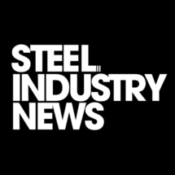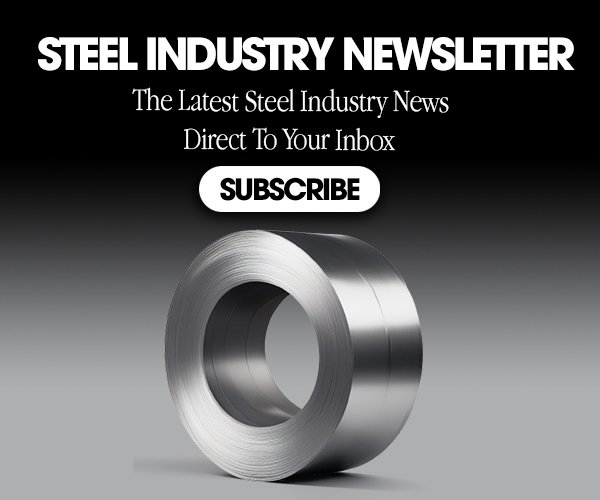Nucor Announces Strategic Price Increase Amid Market Uncertainty
Nucor Corporation has implemented another price increase effective June 30, 2025, raising its Consumer Spot Price (CSP) for hot-rolled coil to $910 per ton for all producing mills, with California Steel Industries (CSI) pricing set at $970 per ton. This $20 per ton increase represents the company’s ongoing effort to capitalize on favorable market conditions while navigating the complex landscape of tariff uncertainty, stable but cautious demand, and evolving production dynamics that characterize the steel industry heading into the second half of 2025.
The latest pricing adjustment comes as U.S. mills produced an estimated 1,787,000 tons at a 79.6% utilization rate, marking the highest weekly tonnage output since June 2022 2. This production milestone, coupled with improving automotive demand indicators, suggests underlying strength in the steel market despite persistent buyer hesitancy and trade policy uncertainty that continues to influence purchasing decisions across the industry.
Nucor’s 2024-2025 Price History: A Journey of Strategic Adjustments
The comprehensive price history reveals Nucor’s methodical approach to market positioning throughout the past year. Beginning from a baseline of $675 per ton in July 2024, the company executed a series of strategic increases that culminated in a peak price of $935 per ton by March 2025. This trajectory represents a remarkable $260 per ton increase over eight months, reflecting both recovering demand fundamentals and the company’s ability to implement pricing discipline in an environment of reduced import competition.
| Week of | CSP HRC Base Price (All Mills) | Change from Previous Week |
|---|---|---|
| 6/30/2025 | $910 | +$10 |
| 6/16/2025 | $900 | +$10 |
| 6/9/2025 | $890 | +$20 |
| 6/2/2025 | $870 | $0 |
| 5/27/2025 | $870 | -$20 |
| 5/20/2025 | $890 | $0 |
| 5/13/2025 | $890 | -$20 |
| 5/6/2025 | $910 | -$20 |
| 4/29/2025 | $930 | $0 |
| 4/22/2025 | $930 | $0 |
| 4/15/2025 | $930 | $0 |
| 4/8/2025 | $930 | $0 |
| 4/1/2025 | $930 | +$20 |
| 3/25/2025 | $910 | +$20 |
| 3/18/2025 | $890 | +$20 |
| 3/11/2025 | $870 | +$20 |
| 3/4/2025 | $850 | +$20 |
| 2/26/2025 | $830 | +$20 |
| 2/19/2025 | $810 | +$20 |
| 2/12/2025 | $790 | +$20 |
| 2/5/2025 | $770 | +$20 |
| 1/29/2025 | $750 | +$20 |
| 1/22/2025 | $730 | +$20 |
| 1/15/2025 | $710 | +$20 |
| 1/8/2025 | $690 | +$20 |
| 1/2/2025 | $670 | +$20 |
| 12/26/2024 | $650 | +$20 |
| 12/19/2024 | $630 | +$20 |
| 12/12/2024 | $610 | +$20 |
| 12/5/2024 | $590 | +$20 |
The pricing pattern reveals several distinct phases: an aggressive upward trajectory through early 2025, a brief correction period in May as market conditions softened, and now a resumption of increases as mills test the market’s acceptance of higher pricing levels. The $910 per ton current price represents a 34.8% increase from the July 2024 baseline, demonstrating the significant price appreciation that has occurred over the past year.
Market Dynamics: Stability Meets Uncertainty in Q3/Q4 2025
The steel market heading into the second half of 2025 is characterized by a complex interplay of factors that are creating both opportunities and challenges for producers and consumers alike. Steel pricing has exhibited remarkable stability in recent months, with many industry participants adopting a wait-and-see approach as they navigate the uncertain landscape of trade policies, demand fluctuations, and raw material cost pressures.
Buyer behavior has shifted markedly toward cautious procurement strategies, with many companies choosing to maintain minimal inventory levels rather than committing to large-volume purchases that could expose them to potential price volatility. This hesitancy reflects broader concerns about the sustainability of current price levels, particularly given the backdrop of 50% tariffs on steel imports that have fundamentally altered competitive dynamics in the domestic market.
The implementation of doubled tariffs has created what some industry analysts describe as a “protective umbrella” for domestic producers, theoretically allowing for price increases while foreign competitors face significantly higher barriers to entry. However, this protection comes with the caveat that domestic demand must remain sufficiently robust to absorb higher-priced steel, a condition that remains uncertain as economic headwinds persist across key steel-consuming sectors.
Cleveland-Cliffs Raises July HRC Price to $950: Will Nucor Follow Suit?
Cleveland-Cliffs has announced its July hot-rolled coil (HRC) price at $950 per ton, representing a notable increase from its June offer of $910 per ton and signaling renewed confidence in the domestic steel market. This $40 per ton jump reflects both shifting market sentiment and the company’s strategic positioning as one of the leading U.S. steel producers.
By contrast, Nucor’s current HRC base price stands at $910 per ton for the week of June 30, 2025, and the company has yet to match Cleveland-Cliffs’ new July pricing. This divergence is drawing significant attention from buyers and market analysts, as the two companies traditionally set the tone for domestic steel pricing and often move in tandem over the course of a pricing cycle.
Nucor’s pricing actions in the coming weeks will be closely watched, as it is highly likely that the company will consider Cleveland-Cliffs’ aggressive move when determining its own spot price adjustments. Historically, Nucor has responded to major pricing announcements from Cliffs, either by matching or coming close to their levels to maintain competitive positioning and market share. The current gap of $40 per ton is significant in a market where buyers are acutely sensitive to price differentials, especially amid ongoing tariff uncertainty and cautious purchasing behavior.
“Nucor cannot ignore the Cliffs announcement. The company’s next price move will almost certainly take into account Cliffs’ $950/ton marker, and time will tell whether Nucor will raise its own price to match, exceed or closely approach this level.”
Market participants are now speculating whether Nucor will announce a further price increase in July to align more closely with Cleveland-Cliffs. While it is impossible to predict with certainty, industry precedent suggests that Nucor is unlikely to leave such a pricing gap unaddressed for long. The company’s future pricing decisions will be shaped by a combination of Cliffs’ latest move, real-time demand signals, and ongoing shifts in raw material costs and end-market activity.
Production Excellence: Record Utilization Rates Signal Industry Strength
The achievement of 1,787,000 tons of weekly production at a 79.6% utilization rate represents a significant milestone for the U.S. steel industry, marking the highest weekly tonnage output since June 20222. This production level reflects both improved demand conditions and enhanced operational efficiency across domestic steel mills, suggesting that the industry has successfully optimized its capacity utilization in response to evolving market conditions.
The utilization rate improvement from 79.4% to 79.6% week-over-week, while seemingly modest, represents meaningful progress when viewed against the broader context of industry performance over the past several years 2.
This disparity between weekly production peaks and monthly averages highlights the episodic nature of demand, with mills experiencing periods of high utilization followed by more moderate activity levels. The ability to achieve such high utilization rates during peak periods demonstrates the industry’s operational flexibility and responsiveness to market signals, positioning producers favorably for periods of sustained demand growth.
Automotive Sector Recovery: A Critical Demand Driver
The automotive sector’s performance has emerged as a crucial factor in steel demand projections for the remainder of 2025. After experiencing a slowdown in April, U.S. light vehicle assemblies increased significantly in May, reaching a 10.92 million unit rate, up 7.5% from the April rate1. This represented the highest monthly rate since March 2024 (8.9 million units), providing renewed optimism for steel demand from one of the industry’s most important end markets.
The automotive recovery is particularly significant given that the automotive sector represents approximately 20-25% of total steel demand. Any sustained improvement in vehicle production directly translates to increased steel consumption, creating positive momentum for pricing and volume across the steel supply chain. The May sales figures suggest that earlier concerns about automotive market softness may have been overstated, with underlying consumer demand remaining more resilient than initially anticipated.
However, some industry observers note that automotive demand patterns remain subject to broader economic influences, including interest rates, consumer confidence, and potential policy changes that could affect vehicle purchasing decisions12. The sector’s recovery trajectory will likely be a key determinant of steel market performance through the remainder of 2025, with any acceleration in vehicle production providing additional support for steel pricing and utilization rates.
Raw Material Cost Pressures: Scrap Market Dynamics
The steel scrap market continues to exert significant influence on production costs and pricing strategies across the industry. Current scrap steel prices range from $150 to $400 per ton, with HMS 1&2 grade averaging approximately $225 per ton as of recent market assessments. These price levels, while lower than peak periods, still represent elevated costs for electric arc furnace operators who rely heavily on scrap as a primary raw material input.
Iron and steel scrap prices have stabilized at around $298 per ton according to recent market data, with minimal week-over-week movement suggesting that the scrap market has found a temporary equilibrium. This stability is beneficial for producers as it provides greater predictability in cost planning and pricing strategies, though any significant movement in scrap costs could quickly alter the competitive dynamics between different production methods.
The scrap market’s performance is particularly important for EAF-based producers, who have faced operational challenges as scrap prices remain above psychological expectations. These elevated costs have forced many EAF operations to maintain medium-to-low production levels, creating a supply imbalance between blast furnace and EAF production routes that could influence regional pricing dynamics.
Trade Policy Impact: Navigating the New Tariff Landscape
The doubling of Section 232 tariffs from 25% to 50% on steel imports has fundamentally reshaped the competitive landscape for domestic steel producers. This policy change, which took effect in June 2025, represents one of the most significant trade interventions in recent steel industry history and has created both opportunities and uncertainties for market participants.
BCG estimates that the new tariffs could add up to $50 billion in tariff costs, effectively doubling the estimated impact of the previous 25% tariffs8. This substantial cost increase for imported steel theoretically provides domestic producers with greater pricing flexibility, as foreign competitors now face significantly higher barriers to entry into the U.S. market.
The immediate market response has been mixed, with some importers scrambling to secure steel supplies before additional tariff costs take effect, while domestic mills appear to be testing the market’s acceptance of higher prices. However, the long-term sustainability of tariff-protected pricing depends on domestic demand remaining sufficiently robust to absorb higher-cost steel without triggering substitution effects or demand destruction.
Market Outlook: Cautious Optimism Amid Persistent Uncertainties
Looking ahead to the second half of 2025, the steel market faces a complex array of factors that will determine pricing and demand trajectories. Many market participants remain cautiously optimistic about near-term prospects, citing the combination of tariff protection, disciplined mill operations, and improving end-market conditions as supportive factors for steel pricing.
However, significant uncertainties remain, particularly regarding the sustainability of current demand levels and the potential for broader economic headwinds to impact steel-consuming sectors. The overall evolution of steel demand remains subject to very high uncertainty, with some forecasts suggesting that meaningful improvement may not materialize before the first quarter of 2026.
European steel market conditions provide additional context for understanding global dynamics, with EUROFER projecting continued recession in apparent steel consumption through 2025 (-0.9%) for the fourth consecutive year18. This international weakness could create additional pressure on global steel trade flows and potentially influence U.S. market conditions despite tariff protections.
Strategic Implications for Steel Market Participants
The current market environment presents both opportunities and challenges for various stakeholders across the steel value chain. Domestic steel producers appear well-positioned to benefit from tariff protection and improving utilization rates, though they must balance pricing optimization with demand sustainability concerns.
Steel buyers and service centers face the challenge of managing inventory levels and procurement timing in an environment of price volatility and supply uncertainty. The cautious purchasing behavior observed across the industry reflects the difficulty of predicting optimal procurement strategies when both prices and policy conditions remain fluid.
End-users in automotive, construction, and manufacturing sectors must contend with elevated steel costs while evaluating the potential for further price increases or corrections. The ability to pass through steel cost increases to final customers will largely determine the impact on profitability and competitiveness across steel-consuming industries.
Conclusion: Navigating Complex Market Dynamics
Nucor’s June 30, 2025 price increase to $910 per ton reflects the company’s confidence in current market conditions while acknowledging the complex dynamics that characterize the steel industry heading into the second half of 2025. The combination of record production levels, improving automotive demand, and tariff protection provides a supportive foundation for steel pricing, even as buyer hesitancy and broader economic uncertainties create headwinds for sustained demand growth.
The 79.6% utilization rate achieved by U.S. mills demonstrates the industry’s operational capabilities and market responsiveness, while the 10.92 million unit automotive assembly rate suggests that one of the key end markets is showing signs of recovery. However, the cautious approach adopted by many steel buyers reflects legitimate concerns about the sustainability of current price levels and the potential for policy or economic changes to alter market dynamics.
As the industry navigates the remainder of 2025, success will likely depend on the ability to balance pricing optimization with demand preservation, while maintaining operational flexibility to respond to evolving market conditions. The steel market’s performance in Q3 and Q4 will serve as a critical test of whether current pricing levels can be sustained in an environment of ongoing uncertainty and evolving global trade dynamics.
Disclaimer:
The content of this article is for informational purposes only and does not constitute financial advice, investment recommendations, or predictions of future steel pricing. Readers should conduct their own research and consult with qualified financial professionals before making any business or investment decisions related to steel.
Check out some of our other articles:
- Hyundai and Boston Dynamics Unveil All‑Electric Atlas Robot: Transforming the Future of Steel Production, Distribution, and Auto Manufacturing
- Nucor Continues to Hold Steel Price at $950/Ton: What Q1 2026 Holds for Steel Prices, Tariffs, and Market Recovery
- 🎉Ring In 2026 with Industry Insights
- Steel Industry Insights: A Guide to Tracking Metrics, Predicting Trends, and Making Strategic Business Decisions in the Steel Industry
- Nucor Raises Prices for 9th Consecutive Week: What the Latest Increase Means for the Steel Market
📬 Enjoying this article? Don’t miss the next one.
SUBSCRIBE below to the Steel Industry News email newsletter to get the latest updates delivered straight to your inbox. Includes a comprehensive reporting of all key topics impacting the steel industry. 🌍The Most Recent Steel News Reports — in one easy-to-read weekly format
🔐 Annual Plan: Just $300/year – that’s 6 months free . – 💰 Best value of unbiased, timely reporting in the industry.
🤝Operational Support: Your paid subscription support helps keep Steel Industry News independent and ad-light
FREE for paid subscribers
🎧 Exclusive Steel Industry News Podcast— Listen on the go! Includes insights, trends & commentary you won’t find anywhere else
📘 Exclusive EBooks
📘 Lucky 13: Proven Strategies to Boost B2B Sales Performance
📘 Purchasing Strategies For Success
📘 AI for Steel and Manufacturing: Unlocking Innovation and Efficiency
📘 [NEW] Cybersecurity in Steel and Manufacturing: Protecting Your Assets in a Digital Age
📊 Steel Industry Insights – Our Insights & Guide track key market indicators weekly —like mill pricing, input costs, and demand trends —to help readers clearly understand what’s driving steel prices and where the market is headed.










